Every place in Greece lays claim to an ancient sage, but the region around the unassuming village of Olymbiada trumps them all.
The ruins of nearby Stageira claim none other than Aristotle who was born there a dizzying 2400 years ago. Teacher of Alexander the Great and founder of the first ever research lab, the Athens Lyceum, he was the prime polymath of antiquity.
I can feel Aristotle’s pivotal presence from the moment I reach Thessaloniki, for the University is named after him, as well as the main square. Indeed, every stroll I take seems to lead me back to Plateia Aristotelous.
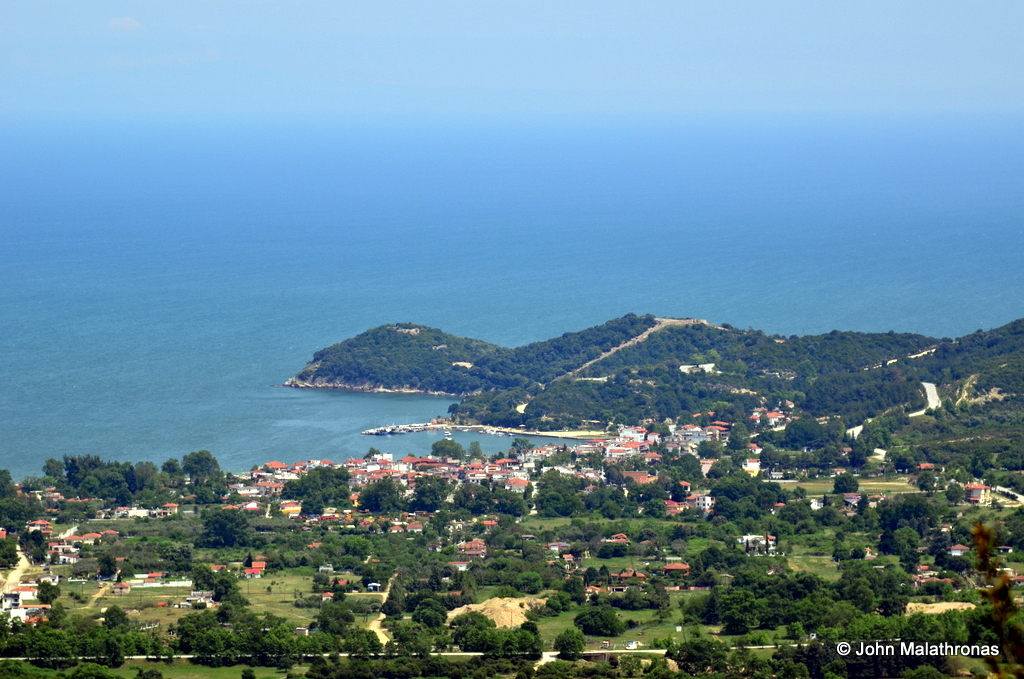
View of Olymbiada and the twin hills of Stageira in the distance
In the evenings it’s a vibrant scene, teenagers and students (the city has a large student population) mingling with older couples. On Sunday afternoons, I meet families walking arm in arm, engaged in the ritual of the Mediterranean passeggiata. As for weekdays, it’s full of street vendors who try to sell me everything bar their mothers.
Travel closer to Aristotle’s birthplace and the signs of his presence increase. In the village of Nea Stageira, a couple of hours drive from Thessaloniki, there is a children’s science park based loosely upon his teachings. I say children, but my party of three adults is totally taken in with excitement.
Every exhibit is accompanied with a relevant quote from Aristotle whose writings were accepted wisdom to the point of stifling original thought. The modern world really began when people started challenging Aristotle’s theories .
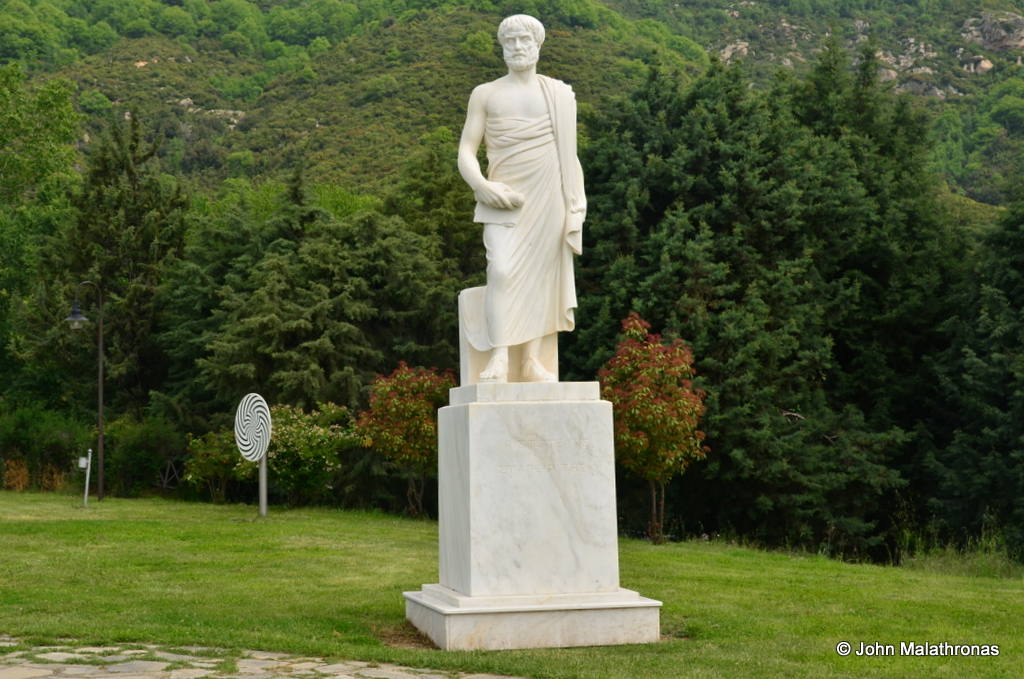
Aristotle park
The park illustrates this perfectly. Next to a solar clock lies an optical prism and a sun ray concentrator lens that can melt your flip-flops or worse – all known to Aristotle. Opposite stand a large Newton’s cradle and a telescope, a reminder that both Newton and Galileo took the scientific baton using Aristotelian logic to formulate their laws.
For me the park’s real magic consists of the four illusory optical disks that trick the eye in seeing movement where there is none, and the pair of parabolic reflectors.
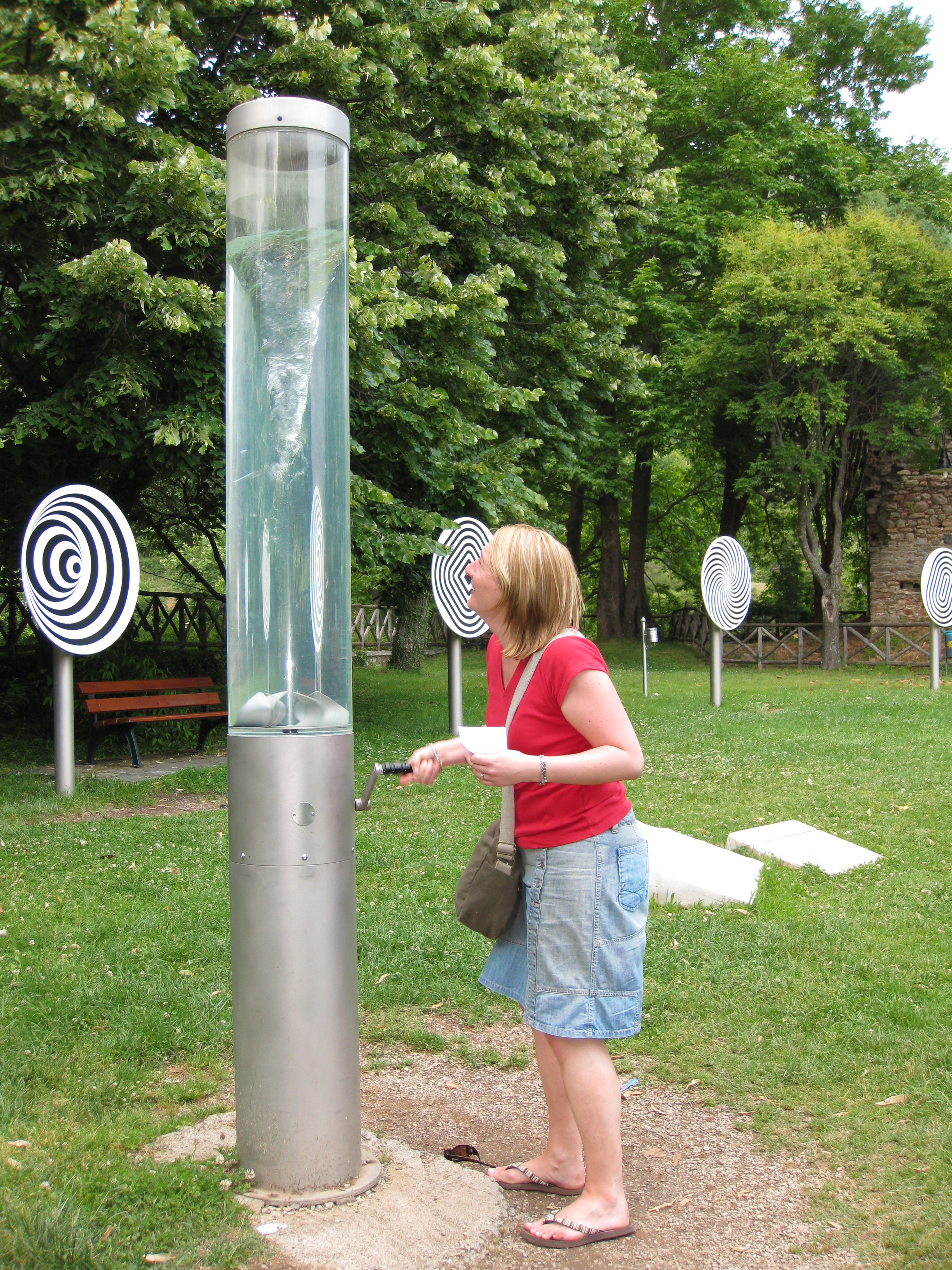
Enjoying Aristotle Park
Put your head close to one reflector’s focus and speak softly. The alignment is such that your friend – his head also buried in the twin reflector, fifty-odd metres away – can hear you perfectly.
Nea Stageira also marks the beginning of the Aristotle Walk that joins the village to ancient Stageira through a virgin forest on the slopes of Mount Holomontas. It’s an uninterrupted, well-signposted 18km-path that starts off steeply but continues smoothly down with two resting panorama points.
Here the evergreen vegetation reminds you of central France: firs and chestnuts punctuated by the odd beech in the higher elevations give way to evergreen holly oaks, strawberry trees and cistus shrubs as you descend, leading finally to the fragrant yellow flowers of Spanish broom close to the shore.
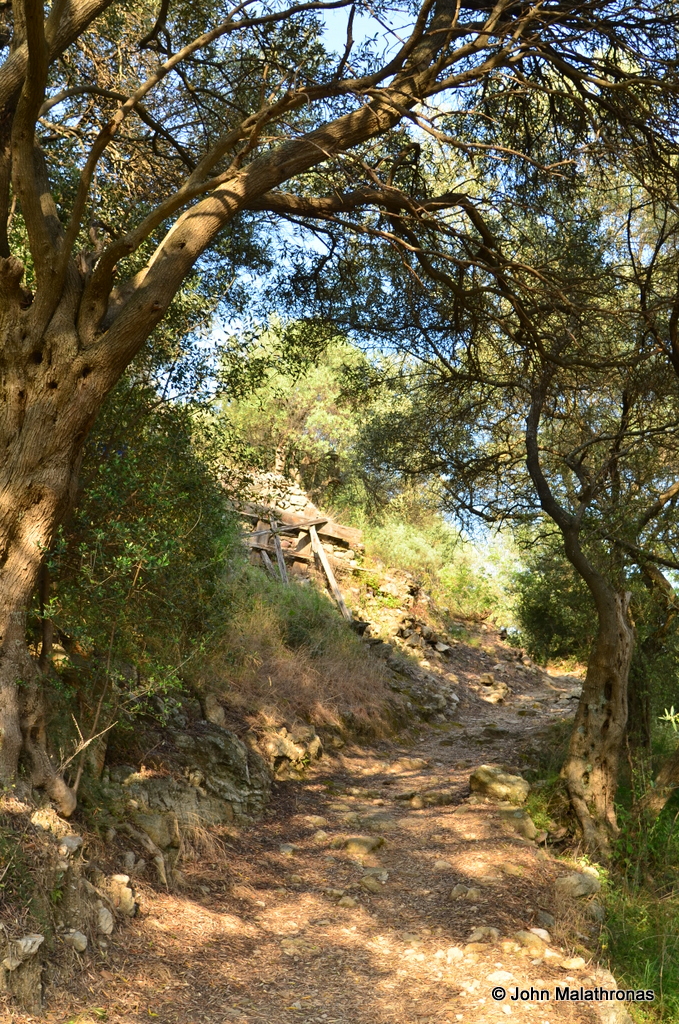
Aristotle Walk
Stageira itself is staggering, for ancient Greeks had a flair for settling in picturesque settings. Spread over two hills, it has a grand view of the endless beach of Olymbiada on one side and the almost square Piscina bay on the other. Almost immediately below the site is a gorgeous beach and from here it is but a 5 minute walk down the hill to Olymbiada village, the best place from which to explore the area.
Any restoration has been done with sensitivity and is delimited from the original by a discernible, yet largely undetectable ‘snake’ of brown mortar. Here are the walls, there’s a sacrificial altar, over yonder is the Agora and beyond that the shopping district.
Yet, as I stand by the lone, excavated villa, looking over the southern beaches in the distance I can enter the minds of the scores of its ancient owners. Centuries have passed but the grand vista from their terrace has remained the same: I know they felt what I feel now.
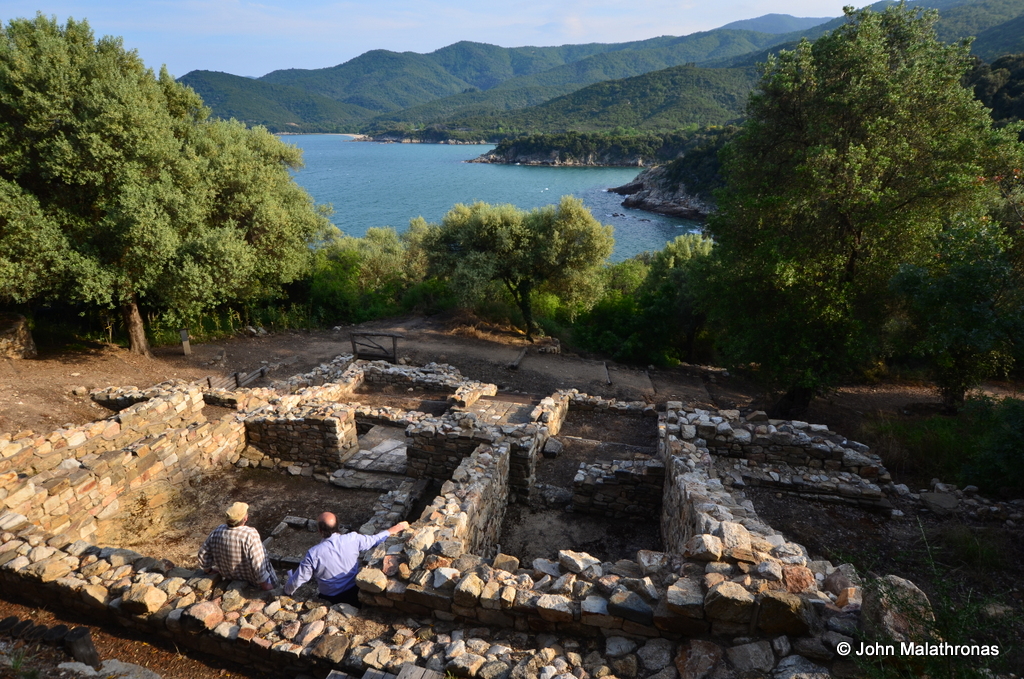
View from ancient villa’s terrace
They also knew of Aristotle – some by name, a few lucky ones in person.
On the 2400th anniversary of the great man’s birth, the fact that the world is still as aware of him as they were makes the perfect epitaph.
John Malathronas
John Malathronas is a travel writer and photographer, co-author of the Rough Guide to Greece.
Update:
An interesting coda to our recent ‘On The Trail Of Aristotle’ blog. On 27 May 2016, archaeologist Mr Sismanides announced that he has unearthed the tomb of Aristotle in the ancient village of Stagira, Aristotle’s birthplace, some 40 miles east of Thessaloniki. Read more here.




